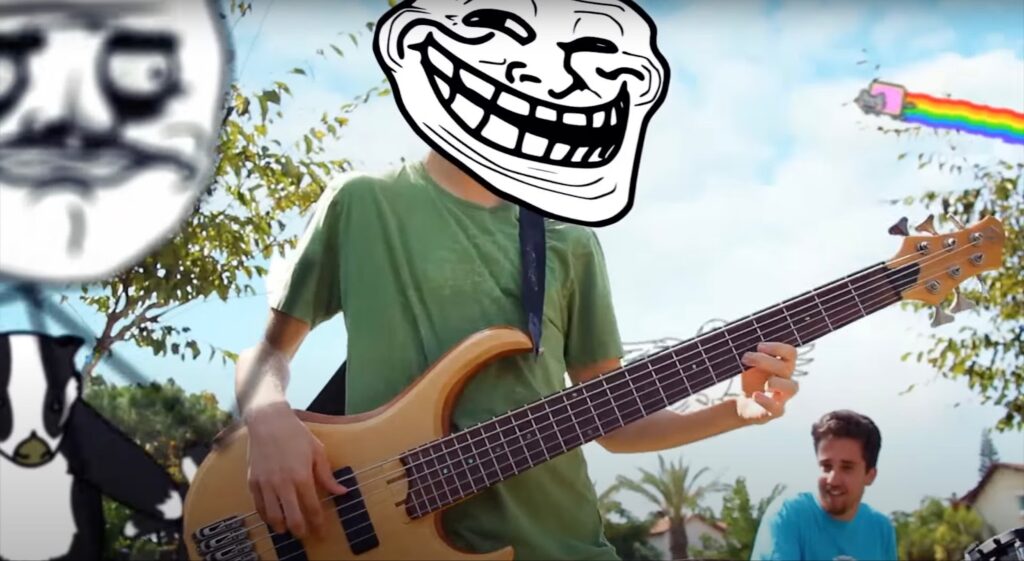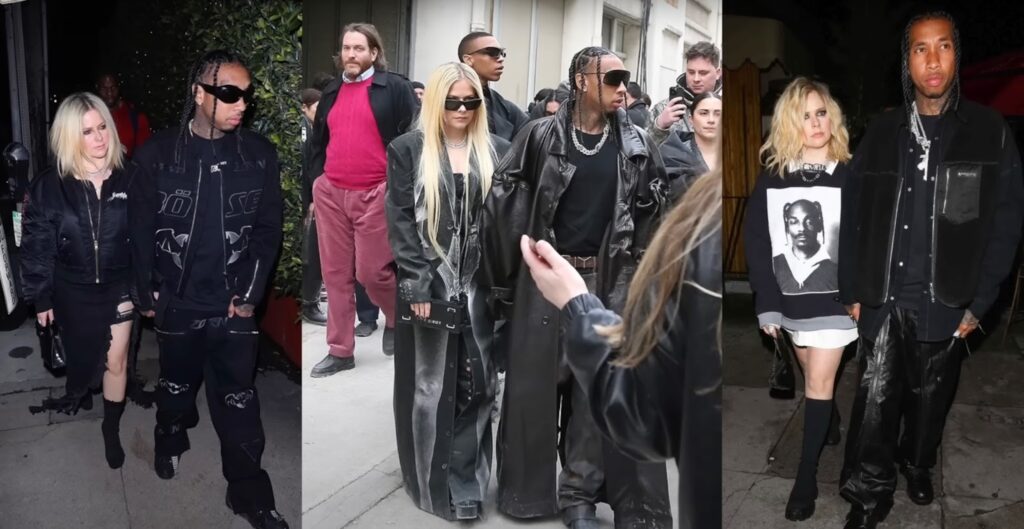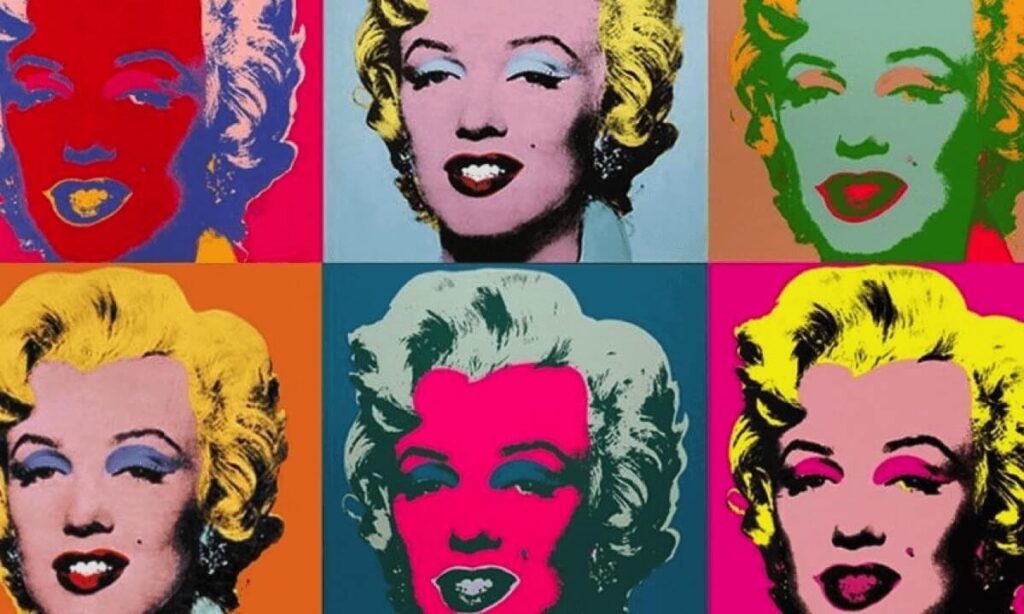Unraveling Pop Culture: The Most Vibrant Examples
Have you ever wondered why certain trends, celebrities, movies, or even phrases become so popular seemingly overnight? Welcome to the world of pop culture! This domain is the lifeblood of modern society, reflecting both current events and timeless sentiments. But what really are the most shining examples of pop culture? Let’s dive right in.
Movies: The Silver Screen Icons
The magic of cinema transcends borders and languages, capturing hearts and evoking emotions. Over the years, numerous films have not only entertained but have deeply ingrained themselves into the fabric of society.
- Star Wars Saga: George Lucas’ epic space opera has left an indelible mark on pop culture. Whether it’s the iconic Darth Vader reveal, the legacy of the Jedi, or the philosophical undertones of the Force, Star Wars is more than just a movie series. Merchandising, fan theories, conventions, and spin-offs show just how expansive this galaxy far, far away truly is;
- Titanic: James Cameron’s magnum opus captured the tragic beauty of the RMS Titanic’s maiden voyage. The poignant tale of Jack and Rose amid the backdrop of a historical tragedy showed us the resilience of human spirit and love. From Celine Dion’s haunting “My Heart Will Go On” to the memorable scenes on the ship’s deck, “Titanic” sails on in our memories;
- The Matrix: This cyberpunk masterpiece made us question reality. Philosophical and groundbreaking, the movie presented a dystopia where humans are trapped in a simulated reality by machines. Concepts like “red pill vs. blue pill” have become synonymous with waking up to harsh truths.
Music: Melodies that Echoed Across Borders

Music, a universal language, binds us in ways words sometimes can’t. Over the decades, various artists and their tunes have transcended mere entertainment to become anthems of generations.
- Michael Jackson’s “Thriller”: The King of Pop didn’t just give us a song, but an era. The iconic dance, the zombie theme, and that unforgettable bassline – “Thriller” is more than a track; it’s an experience;
- The Beatles’ Invasion: The Fab Four from Liverpool changed the course of music history. Their melodies, ranging from the simple love tunes to psychedelic trips, are timeless. Their influence permeates pop culture, from fashion to film and beyond;
- Beyoncé’s “Single Ladies”: A modern anthem of empowerment. Beyoncé’s powerful vocals, combined with catchy beats and a dance that went viral, made this a cultural phenomenon. It’s a song that celebrates independence and has been an inspiration for many.
Television: Series that Became Talk of the Town

Television, the companion of many homes, has given us stories that resonate, characters we cherish, and moments we can’t forget.
- “Friends”: Set in New York, this story of six friends navigating life, love, and work became a global sensation. From Joey’s “How you doin’?” to the Central Perk coffee house, “Friends” has left an everlasting imprint;
- “Breaking Bad”: A high school chemistry teacher turned methamphetamine producer, this gripping tale of transformation, morality, and ambition showcased Bryan Cranston’s impeccable acting chops and Vince Gilligan’s storytelling prowess;
- “Game of Thrones”: Adapted from George R. R. Martin’s novels, this series, with its intricate plot, vast landscapes, and morally grey characters, sparked worldwide discussions. The battles, the politics, and the dragons – it’s a fantasy epic for the ages.
Internet Memes: Digital Laughter Pills

The rise of the internet age has given birth to an entirely new form of pop culture expression: memes. These bite-sized, often humorous pieces of content resonate widely due to their relatability and shareability, making them the modern symbols of digital culture.
- Distracted Boyfriend: This meme, derived from a stock photo, humorously portrays a man looking at another woman while his girlfriend looks on in disdain. It quickly became a symbol for any new attraction distracting someone from their current situation or obligation;
- Mocking SpongeBob: Originating from the beloved cartoon “SpongeBob SquarePants”, this meme, characterized by alternating capital and lowercase letters, portrays a mocking tone. It’s a playful nod to how we imitate others when they say something we find questionable or absurd;
- Woman Yelling at a Cat: A perfect blend of a reality TV screenshot and a perplexed cat, this meme resonates because of its universal theme: misunderstandings. Representing overblown reactions to innocent statements, it’s a meme many find relatable in our age of digital communication.
Fashion: Wearing Pop Culture

Fashion, like other forms of art, reflects the zeitgeist of its era. Pop culture heavily influences the sartorial choices we make, with certain styles becoming iconic representations of their times.
- Bell-bottom jeans: Born in the psychedelic ’70s, these flared trousers became synonymous with the disco era, hippie culture, and rock ‘n’ roll. Stars like Cher and The Beatles popularized this trend, turning it into a pop culture sensation;
- The “Rachel” haircut: Jennifer Aniston’s character, Rachel Green, from “Friends” didn’t just give us memorable lines; she also inspired a hairstyle. This layered bob became the sought-after look of the ’90s, marking its permanent place in hairstyle history;
- Platform shoes: Made famous by bands like the Spice Girls, these chunky shoes became emblematic of the ’90s pop scene. Not just a fashion statement, they represented the bold and rebellious spirit of youth.
Video Games: Playful Pop Culture Pillars

Video games, once a niche hobby, have exploded into mainstream pop culture. With compelling narratives, breathtaking graphics, and interactive experiences, they’ve cemented their place as modern storytelling mediums.
- “Super Mario”: Nintendo’s iconic plumber, Mario, has become synonymous with gaming. From his adventures in the Mushroom Kingdom to rescuing Princess Peach, his pixelated charm is a cherished piece of many childhoods;
- “Fortnite”: More than just a battle royale game, “Fortnite” evolved into a digital social space. With its dance emotes, in-game concerts, and collaborations with major franchises, it’s a pop culture powerhouse;
- “Minecraft”: A testament to the power of creativity, “Minecraft” offers a sandbox experience like no other. The blocky aesthetic, combined with the game’s limitless possibilities, makes it a favorite for gamers of all ages.
Literature: From Pages to Popularity

Books have the unique power to transport readers to different worlds, making them live myriad lives. Over time, certain literary works have gone beyond their pages, influencing pop culture at large.
- Harry Potter series: J.K. Rowling’s tale of a young wizard, his friends, and their battles against the dark wizard Voldemort has captivated millions. From terms like “Muggle” to sports like “Quidditch”, the series’ influence is omnipresent;
- “The Hunger Games”: Suzanne Collins painted a dystopian world where children are pitted against each other in a televised death match. Themes of rebellion, love, and sacrifice make it a pop culture staple;
- “Twilight”: Stephenie Meyer’s saga of a human-vampire-werewolf love triangle has its fair share of admirers and critics. With its brooding characters and intense romance, it sparked a resurgence in vampire-based media.
Pop Culture Landmarks: Places that Became Icons

Certain locations, due to their significance in movies, television, or historical events, become tourist meccas and symbols of pop culture.
- The Hollywood Sign: Nestled in the hills of Los Angeles, this iconic sign represents the dream factory of the world. It’s not just a sign; it’s a symbol of aspirations, of movies, and of the glitz and glamour of the entertainment industry;
- Central Perk from “Friends”: This fictional coffee shop in New York became as iconic as the series itself. Whether it’s Phoebe’s “Smelly Cat” performances or the group’s countless coffees, it’s a place many wish they could visit for real;
- King’s Cross Platform 9¾: Thanks to the “Harry Potter” series, a simple platform in King’s Cross Station, London, became a pilgrimage site for fans. It embodies the magical journey to Hogwarts and the escapism the series offered.
Innovations: Tech Moments that Shaped Pop Culture
Technology not only makes our lives easier but, at times, defines pop culture moments and trends.
- The iPod: Apple’s sleek device changed how we consumed music. With its iconic white earbuds and click wheel, it became a symbol of the 2000s, revolutionizing the music industry and how artists reached their fans;
- Social Media Platforms: Facebook, Twitter, and Instagram didn’t just connect people; they birthed influencers, viral trends, and real-time global conversations. They’ve influenced elections, started movements, and even given rise to new forms of art;
- Virtual Reality (VR): Once a sci-fi dream, VR is now a reality. Platforms like Oculus Rift transport users to different worlds, be it for gaming, movies, or unique experiences. It’s a blend of technology and storytelling, reshaping how we perceive entertainment.
Advertisements: More than Just Marketing

Ads have a unique power. They can entertain, inform, and sometimes, become larger than the product they’re selling.
- Old Spice’s “The Man Your Man Could Smell Like”: This quirky commercial redefined advertisement creativity. With its fast-paced humor and memorable lines, it became an instant internet sensation;
- Coca-Cola’s Polar Bears: These animated bears, with their heartwarming antics in a chilly Arctic setting, became synonymous with the brand’s holiday campaigns. They epitomize joy, togetherness, and the simple pleasures in life;
- Nike’s “Just Do It” Campaign: More than just selling sportswear, this campaign became a motivational slogan for many. Its message of perseverance, ambition, and self-belief resonates with athletes and non-athletes alike.
Pop Culture in Sports: Beyond Just Games

The world of sports has given rise to icons, moments, and movements that go beyond the realms of the games themselves. These moments become deeply embedded in our collective memory and influence various other facets of pop culture.
- The Michael Jordan Era: Basketball saw an unprecedented surge in popularity in the ’90s, largely due to Michael Jordan. His prowess on the court and his Air Jordan sneakers made him a global pop culture icon;
- FIFA World Cup Anthems: Every four years, the world unites for the FIFA World Cup, and the anthems, like Shakira’s “Waka Waka” or Ricky Martin’s “The Cup of Life”, become global hits, blurring the lines between sports and music;
- Colin Kaepernick’s Kneel: What started as a personal protest against racial injustice became a global movement. Kaepernick’s decision to kneel during the national anthem sparked conversations around the world about race, rights, and the role of athletes in societal issues.
Pop Culture Through Food: A Delicious Influence
Pop culture often finds its expression through our plates, with certain dishes or dining trends encapsulating moments in time or broad societal shifts.
- Avocado Toast: More than just a dish, it’s often seen as a symbol of millennial dining trends, capturing the essence of health-conscious, Instagrammable food;
- The Cronut Craze: When chef Dominique Ansel combined a croissant and a doughnut, he didn’t just create a dessert; he created a sensation, illustrating how innovation in food can capture the world’s attention;
- TV Dinners: Reflecting the rise of television in the 1950s, these pre-packaged meals symbolized the evolving American lifestyle, where convenience began to take precedence.
The Art of Pop Culture: Canvas to Conversation

Art has often been a reflection of society, and contemporary artists utilize their platforms to comment on, criticize, or celebrate pop culture.
- Banksy’s Street Art: The elusive artist, known for his provocative street artworks, often provides commentary on societal issues, making viewers rethink their beliefs and the world around them;
- Andy Warhol’s Campbell’s Soup Cans: This iconic work is not just a depiction of soup cans but a commentary on consumerism, mass production, and the burgeoning pop culture of the 1960s;
- Kehinde Wiley’s Portraits: Known for his vibrant, large-scale portraits of African Americans, Wiley challenges the norms of classical portraiture and highlights the beauty and power of Black individuals, intertwining history with modern pop culture.
Pop Culture on the Go: The Podcast Revolution
Audio content, especially podcasts, have seen an explosive rise, shaping and reflecting pop culture in real-time.
- True Crime Obsession: Shows like “Serial” captivated listeners worldwide, igniting a renewed interest in cold cases and investigative stories, making armchair detectives out of many;
- Pop Culture Commentary: Podcasts like “The Pop Culture Happy Hour” offer weekly deep dives into movies, music, and more, indicating our never-ending appetite for dissecting and discussing every pop culture facet;
- Mental Health and Self-Care: With growing awareness around mental health, podcasts discussing self-care, mindfulness, and mental well-being have become go-to resources for many seeking solace and understanding.
Conclusion
Pop culture, with its vast umbrella, touches almost every aspect of our lives. Whether it’s a tune that becomes an earworm, a movie that changes how we see the world, or a piece of technology that alters our daily routines, its influence is omnipresent. The beauty of pop culture lies in its evolution; it changes as we do, mirroring society’s hopes, dreams, fears, and aspirations.
FAQs
Pop culture, or popular culture, refers to the set of practices, beliefs, and objects that are dominant or prevalent in a society at a given point in time.
They act as mirrors to society, reflecting its values and trends. They can also influence societal norms, fashion, and even language.
Memes, due to their viral nature, reflect and amplify societal sentiments, humor, and events, making them an essential part of digital pop culture.
From changing the way we consume content to introducing new forms of entertainment, technology reshapes pop culture constantly.
Absolutely. Pop culture can challenge existing norms, introduce new ideas, and even shape the collective consciousness of society.
